The 410th unit of the United States Air Force is designed to be activated and deactivated when the need arises. This began at the outset of the United States involvement in World War II, when the 410th bombardment group was commissioned. Activated on June 25, 1943 the 410th bombardment group was tasked with aiding U.S. and allied forces in three of the toughest and most crucial campaigns of the war; D-Day, the Battle of the Bulge, and the push across the Rhine into Germany. Almost twenty years after the end of the war the 410th would once again be activated, in the midst of the Cold War, this time to defend the United States from any potential domestic threats. Its home is KI Sawyer Air Force Base in Gwinn, MI.
World War II Prowess
Created as a training unit for A-20 Havoc light bombers the 410th bounced from base to base training and prepping for their eventual deployment overseas. They trained day and night, this training proved useful as they would become the first unit to execute both day and night missions. Starting at the new and unfinished Will Rogers Field in Oklahoma on June 25 1943, they were quickly sent to Florida for tactics debriefing. They then bounced back and forth from Oklahoma, Mississippi, and Florida, before finally being assigned overseas.
On March 23 1944 they began preparations to head to their assigned European Base in Essex, England.
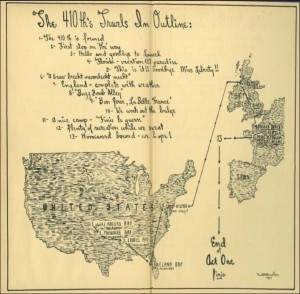
Their home base, RAF Gosfield, did not provide a comforting and enjoyable stay for long. Not soon after the 410th arrived the area around the air field became a hotspot for the Luftwaffe’s bombing raids on London: “it seemed that the men in the group spent more time in foxholes then in their beds” (History, 29). The group was pleased to hear that they were being moved to a more forward base near Coulomniers, France, not because of the bombings but because they would finally be on the front lines.
The 410th executed its first mission on May 4 1944 and did not let up, pitching in and aiding the Allies in any way they could, until the surrender of the Germans.
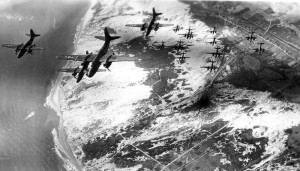
Starting in March 1944 the 410th helped to prepare for the invasion of Normandy by bombing defenses and emplacements along the coast of France, while continuing its support the day of the invasion by bombing machine gun nests and railway points. They even employed drastic measures at times: “Looking back we recall the group dropping down to 3000 feet to support the invasion, blasting railroads, highways, and communications” (History, 61).
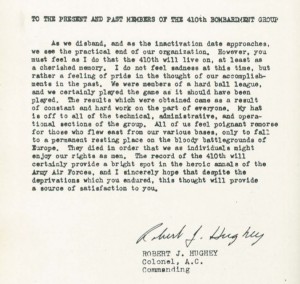
During the five day Battle of the Bulge the A-20 Bombers dropped 1,768 five hundred pound bombs, destroying rail lines, bridges, and vehicles, all while missing very few, if any, of these intended targets. They were so good that they were tasked to take out industrial targets as well, targets not usually given to light bombers. The 410th did not disappoint, severely hindering a jet engine plant in Solingen by destroying buildings around it while doing damage to the workshops.They also demolished an ordinance depot at Mechernich.
Even as the allies crept ever closer to the surrender of Germany, the 410th continued to pound and destroy targets across Germany, destroying rail lines, until the Germans switched to highway travel. They then started destroying highways. With the German’s surrender and the end of the war in Europe the 410th returned to the U.S. in June of 1945 and then were decommissioned on November 7, 1945.
The 410th bomber group received a Distinguished Unit Citation for their effective bombing in Ardennes from December 23-25, 1944. They also received four commendations from high rank personnel for their excellence in executing their mission.
KI Sawyer AFB and the 410th Bombardment Wing
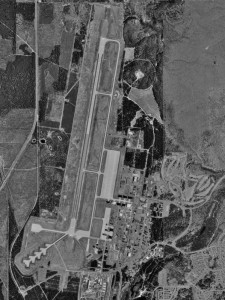
Kenneth Ingalls Sawyer, the Marquette County Engineer at the time, sought to build an airport in order to increase the development of Marquette County. In the years before his death in 1944 Sawyer pushed and pushed for the construction of an airport. Suitable land was found but he sadly never got to see his vision become a reality. The airport began construction later that year and concluded in 1948. It was named KI Sawyer County Airport in his honor.
Not long after the completion of the airport the Air Force began negotiations to acquire the airfield and convert it to a base. On January 24, 1955 a 99-year lease was signed to jointly use the airfield as a civilian and military base. However in 1957 all non-military activity at the site concluded and a new county airport was built for civilian use.
With the Cold War continuing to ramp up and the threat of nuclear attack still present, a defensive shift was made. After the events of the war in Korea, President Eisenhower decided to focus on air defense rather than ground troops. Thus the Strategic Air Command was created to be the first line of defense in case of an attack. Its creation stationed bombers at air bases across the U.S., ready to mobilize at any time as soon as an order was given.
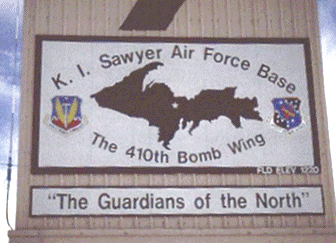
In February 1963 the 4042nd Strategic Wing was renamed the 410th Bombardment Group, but this time becoming a heavy bomber wing, unlike their light group processor. On January 1 1964 the control of KI Sawyer was given to the Strategic Air Command and the 410th became their host unit.
While stationed at KI Sawyer the 410th performed refueling operations and training drills. During the Vietnam War tankers were sent to assist in Operation Young Tiger, performing refueling operations. Bombers were also sent to assist in Operation Arc Light, this involved the bombing of Viet Cong positions. The 410th also assisted the invasion of Grenada in October and November 1983. The 410th was once again deactivated in September 1995, upon the closure of KI Sawyer Air Force Base.
Today
The 410th was most recently reactivated for use in Operation Iraqi Freedom in September 2002, under the name 410th Air Expeditionary Wing. The 410th supported a special operations task force and was tasked with taking out enemy equipment, personnel, high-value targets and enemy leadership in Iraq. Based out of Prince Hassan Airbase the 410th Wing now consists of F-16 Fighting Falcons and A-10 Thunderbolt II’s as well as HC-130 Hercules and HH-60 Pave Hawk helicopters. Again met with harsh conditions the 410th persevered and completed their missions with extreme accuracy as they have been known for.
Primary Sources
- Air Force, United States. History of the 410th Bombardment Group., 1945.
- Hughey, Robert J.. Letter to the members of the 410th, 1945
- Image: Havoc Bombers in Formation, c.1945.
Secondary Sources
- Maurer, Maurer, ed. Air Force Combat Units of World War II. Office of Air Force History, 1983.
- Ravenstein, Charles. “Air Force Combat Wings.” Office of Air Force History, 1984.
- Warnock, Timothy. “Lineage and Honors History Of the 410 Air Expeditionary Wing.”
- “K.I. Sawyer AFB – SAC – 410th Bomb Wing.” Strategic Air Command – 410th Bomb Wing. 2003.
- “K.I. Sawyer Heritage Air Museum History Timeline.” Official Website.
- “Weapons of Mass Destruction (WMD), Strategic Air Command.” Global Security 2011.
- “Factsheets : Operation Arc Light.” Air Force Historical Support Division. 2012.
- “A-10 Units of Operation Iraqi Freedom – Part II.” Warthog Deployments. 2009.
